Each gardener seeks to improve their plot with beautiful long-lying plants. It is to such a chic wagel shrub that has become very popular recently.
Content
Description of culture
Waigela is a decorative shrub, which refers to deciduous species. The name of the plant received in honor of the scientist from Germany, chemist, pharmacologist, botany and owner of the Botanical Garden of Christian Ehrenfried von Wegel. Motherland Wegel is considered to consider Central Asia, which indicates the thermal lobility of culture. In medium latitudes will be the right cultivation of frost-resistant shrubs.
Waigel shrubs have rarely growing cross-pair leaves, slightly oval shape and gear edges. Unusual colors-bells or thunders, as they are also called, grow inflorescences in 5-6 pieces and reach up to 5 cm in diameter. They have a very pleasant aroma and a large color gamut - white, all shades of pink, cream, purple and red. Vegel fruits are similar to a small round box consisting of two halves, which is filled with seeds. A distinctive feature of flowers can be called the ability during the flowering period to change its color several times - from light pink to bright red. Waigela, blooming in June-July, can bloom again in August, so you have a chance to enjoy the beauty of this plant almost the whole season. Waigela, depending on the variety, can reach height from 50 cm to 2-3 m. The shrub looks great as a border along the tracks, and it can serve as a lively hedge instead of boring fences.
How beautifully flowers Wuegela you can see in the photo:
Varieties and types of Weigel
Total Weigela has about 15 varieties growing in Central Asia, in the Far East and even on the island of Java. We list the most popular of them:
- Waigela is early, it is pleasant - grows mainly in the Far East. Alight reaches almost 2 m, there is a juicy green leaves and inflorescences of 3-4 flowers of bright pink color. The flowering period begins from the first days of May and lasts until 30-40 days.
- Weigla Middendorf - a high height bush (1-1.5 m) has bright yellow single flowers with an orange middle. The flowering period is May-June and July-August.
- Waigela Hybrid - richly blooming medium height (up to 1.5 m) bush with a wide thick crown. Flowers can be red, white, pinkish, purple and purple shade. The most popular varieties:
- waigela Bristol, she also Weigla Ruby is a variety derived in the United States at the beginning of the 40th anniversary of the 20th century. The bush grows up to 3 m in height, the crown reaches 3.5 m in diameter. It has large bright green leaves. The flowers are bright red, one can say almost ruby \u200b\u200bcolor around the edge and with a bright orange middle. The flowering period is June-July. It has a rapid growth;
- waigel "Red Prince" - the variety also led in the United States. A bush up to 1.5 m in height with bright red flowers, which look almost ruby \u200b\u200bon the background of juicy green leaves.
- Weigela florida (flowering) - shrub to 3 m tall inflorescence is from 3-4 bright pink flowers. flowering period - the end of May - mid June. It has several varieties:
- weigel magenta (red) - the average height of the bush (1.5 m) with a broad, dense crown. It has a reddish-brown leaves and bright pink flowers with yellow center. Flowering period June - July;
- «Nana Purpurea» - a small copy of the full Weigel purple;
- "Alba" - dwarf species Weigel. The flowers are white with a moment of decay begin to take on a pinkish hue;
- «Variegata» - the most cold-resistant type of culture, has small green leaves and brush of small bright pink flowers;
- weigela pink - a low shrub with flowers of bright pink color on the outside and white inside;
- sort of "Victoria" - a dwarf shrub up to 1 m in height has a reddish-brown leaves and flowers of almost crimson color.
Growing Weigel
Weigel not very capricious plant, but some of the knowledge and skills who wish to engage in the cultivation of culture still does not hurt either.
reproduction Weigel
The plant spreads in two ways:
- seeds;
- cuttings.
Cuttings more common method of reproduction among gardeners. Weigel same seeds are bred more often in nurseries.
Stages of propagation:
- Do not use wood cuttings, otherwise you'll have a long wait for the result - at least 5 years. For propagation by cuttings will approach young green shoots.
- Cut the cuttings are best in early June.
- Choose cuttings of 10-12 cm in length, cutting them at right angles acute garden knife.
- The handle must remain 2-3 leaf.
- Process cut shoots with a solution that stimulates the growth and keep them in a dark room at a temperature not higher than 20 ° C for 10-12 hours. Well, if you have a greenhouse, it sprout cuttings will be most comfortable.
- Later, you can land a prepared cuttings in peat-sandy soil to a depth of 0.5-1 cm, so they put down roots.
- Sprinkle sand cuttings and cover film.
- Be sure to moisturize cuttings 1-2 times a day. You can not water, and spray seedlings.
- If done correctly, then after 35-40 days the cuttings take root.
- 1.5-2 years it will be possible to land the plant to a permanent place.
seed multiplication stages:
- Weigel seeds do not require special preparation before planting.
- Fill the boxes fertilized soil, mixed with sand and sow the seeds in it.
- Sprinkle top with a thin layer of sand, and tighten the film.
- After 3 weeks the first shoots sprout.
- With the appearance of the first 2-3 leaves, the seedlings need to dive.
- In the spring, you can land seedlings in open ground.
- At a permanent place, the seedlings are transplanted, as in the case of stalling - after 1.5-2 years.
Selection of place and soil
First of all, it is necessary to decide on the place where Vegel will be comfortable, and choose a favorable soil for it:
- The shrub most prefers bright or slightly shaded sublime areas protected from the wind with high trees or small buildings.
- Waigel loves fertile loose soil, and at the same time badly tolerates the convergence. Try to plant a plant away from sites that are prone to flooding and long standing water. From growing on places with a high level of groundwater, it is advisable to refuse altogether.
- Weigela does not tolerate acidic soils, they must be allowed to guess lime.
- In the dark areas of Waigel blooms later, the flowering period is reduced or does not begin at all.
Landing Weigel
Best Waigel is coming in the spring, from March to April. If you plan the shrub in the fall, he can slowly grow or die at all. In case you managed to buy seedlings in the fall, then it is better to touch them in a semi-curtain position and bite the crown with a film until spring. If you are planning to buy seedlings in the nursery, choose bushes that are at least 3 years old.
So, the landing of Weigela consists of the following steps:
- Speak the selected area and add organic and mineral fertilizers to the soil, after which it is reappearing soil.
- Drop a hole with a depth of 50-60 cm.
- At the bottom, be sure to lay out drainage in the form of gravel and sand with a layer of 15 cm.
- If you sit down at once somewhat bushes, then the distance between them should be at least 3 m for high grades and 1 m for Vegel Karlikova.
- Lower the seedlings into a pit, not blocking the root neck, and plant it with the earth.
- Failure and inspire the land around the shrub, then pick it up with water.
Wayegela, the landing of which was carried out correctly, quickly captures and blooms already at the first summer season.
Wayigel care
Waigela, despite not very troublesome cultivation, still needs a certain and regular care:
- Be sure to keep the soil regularly, but do not overdo it in order not to destroy the plant.
- Ruff as often as possible soil, it will enrich it with oxygen.
- Required regular weeding from weed grass.
- Mulch the soil after each loosening and weeding, it will help reduce the amount of irrigation and germination of weed grass around shrubs. As a mulch, you can use sawdust, bark of trees or dry foliage, grass.
- Cut the dry and frostbed branches of each spring and autumn.
- And, of course, you need to feed the bushes with mineral and organic fertilizers.
Undercabe shustarnikov
If you correctly prepared the soil and filled with its fertilizers, then the first 2 years can not be particularly worried, the shrubs quite enough of all the necessary trace elements. After 2 years, perform feeding as follows:
- In the first feeding needle in the spring, after snow comes down. It stimulates the growth of the plant, will help to appear a large number of young shoots. Make a mixture of nitrogen, potash and phosphoric fertilizers into the soil. Before you feed the soil, be sure to read the instructions for each fertilizer so as not to harm shrubs.
- The period of the second feeding is the end of May or beginning of June, during the formation of the kidneys, but even before flowering. Make superphosphates and sulfate potassium, nitrogenous fertilizers are not needed during this period, as they slow down the ripening of wood and can even cause the roting of the plant. Superphosphates contribute to abundant flowering, and the potash fertilizers will strengthen the branches, thereby preparing them for the winter season so that they are not injured from frosts.
- The third and last feeding is carried out in the fall, after the shrubs are swinging. The best fertilizer in this period will be wood ash (200 g per 1 sq. M). Add it to the ground and dig it.
Trimming shrubs
For the first 2-3 years, the young plant needs only in sanitary trimming in case of frostbite or damage to the branches. Further trimming of Weigel is carried out as follows:
- The frozen, damaged, weakened and sick branches cut into early spring.
- At the end of each summer, after flowering, young shoots began to grow, they carry out a decorative trimming, forming a shrub crown. In case of delay, put the trimming until autumn so as not to damage new twigs on which repeated bloom is possible.
- Every 3-4 years need to rejuvenate shrubs, removing old branches that are over 3 years old. The rejuvenating trimming of a plant from diseases and pests that love to settle in the crust of old shoots.
Fighting pests
Like any plant, Wayegel is very attracted by various pests, which serve as pedalous diseases. The most dangerous of them are considered:
- tLL Green and black;
- sheet-raging caterpillars;
- cellic ticks;
- triples;
- chafer;
- medveda.
These pests for young shrubs are especially dangerous. Most often, harmful insects show activity in drought. But, since during this period, Waigel no longer blooms, then for flowers they are not dangerous, but can harm the foliage. If you notice a tort or web tick on leaves, handle shrubs with special means. But the root system of Weigel is constantly dangerous. Remember, that:
- You can put the larvae of the Medvedok and the May beetle with organic fertilizers.
- Carefully follow the leaves of Weigel - if they begin to turn yellow and twist, it is necessary to urgently carry out the processing of the root system: pour the ground with the roots of the carbofos.
- If you know that the Medveda is found on your site, then when boarding Weigels, add Medvetoks to the pit.
Preparation for winter
When shrubs are swinging and fall from them the leaves, the period of preparation for winter begins:
- Cut damaged and broken branches.
- Remove the fallen leaves and suck the land the rolling circle, forming a 20-25 cm high with a height of 20-25 cm.
- Tie the branches of the shrub and bite them with a glued, burlap or cover the rubberoid.
As you can see, Waigela is not good in growing and care for it is easy. This beautiful and noble plant deserves to be grown in your favorite garden.

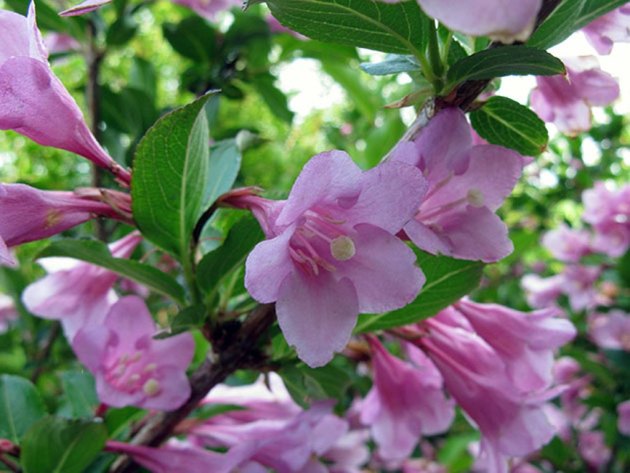
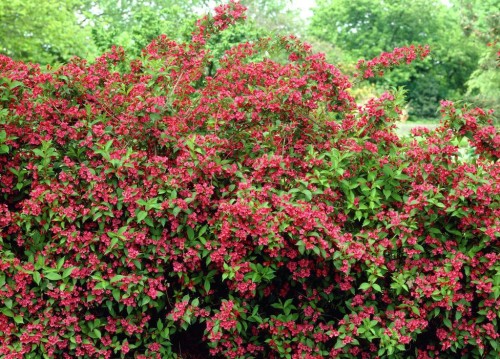
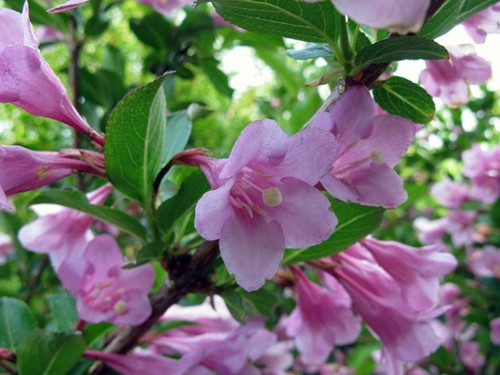
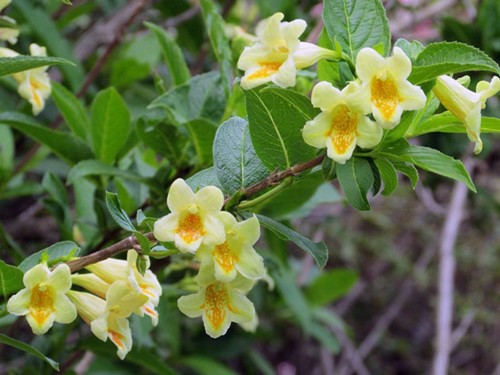
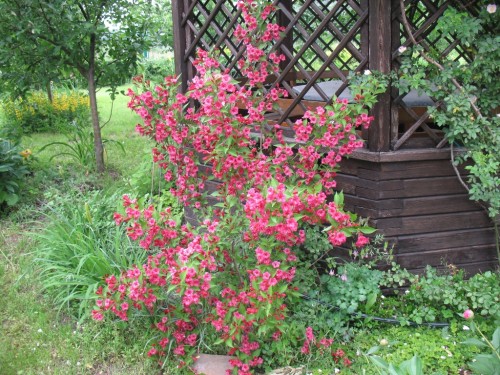
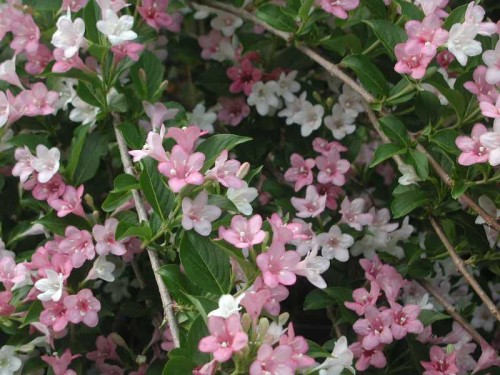
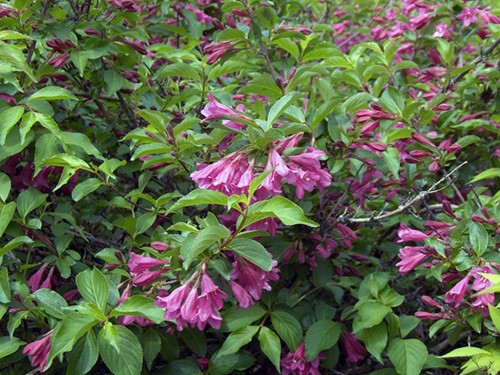
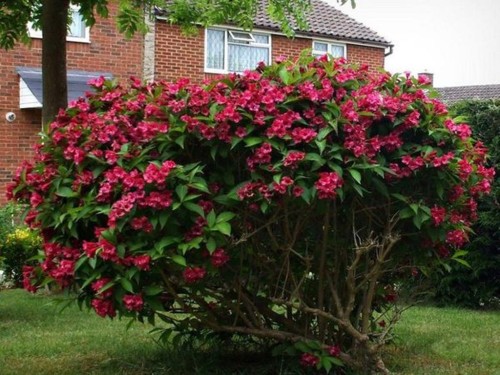












 Start a discussion ...
Start a discussion ...